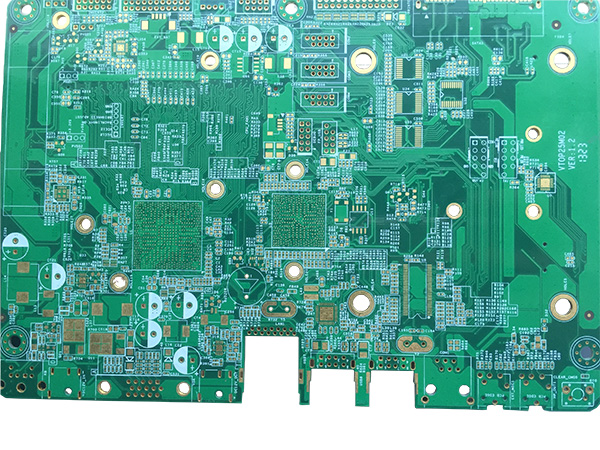The following is a detailed analysis of 7 feasible processes for PCB design and production
1.PCB circuit
(1). Minimum line width: 6mil (0.153mm). That is to say, if the line width is less than 6mil, the production will not be possible (the minimum line width and line spacing of the inner layer of the multilayer board is 8MIL) If the design conditions permit, the larger the design, the better, the line width rises, the better the factory produces, the higher the yield, The general design convention is about 10mil, this point is very important, the design must be considered.
(2). Minimum line spacing: 6mil (0.153mm). The minimum line distance is line-to-line, and the distance from line to pad is not less than 6mil. From a production point of view, the larger the better, the general rule is 10mil. Of course, the larger the better, the design is very important. Design Must be considered.
(3). The distance between the line and the outline line is 0.508mm (20mil).
o4YBAFtvnduAAtQ_AAXYzhLJ1vM920.png
2. Via vias (commonly known as conductive holes)
(1). Minimum aperture: 0.3mm (12mil).
(2). The minimum via hole (VIA) aperture is not less than 0.3mm (12mil), and the single side of the pad cannot be less than 6mil (0.153mm), preferably greater than 8mil (0.2mm), but not limited, this point is very important, design Must be considered.
(3). Via hole (VIA) hole to hole spacing (hole edge to hole edge) should not be less than 6mil, preferably greater than 8mil. This point is very important, and the design must be considered.
(4). The distance between the pad and the outline line is 0.508mm (20mil).

3. PAD pad (commonly known as plug-in hole (PTH))
(1). The size of the plug-in hole depends on your component, but it must be larger than the pin of your component, and it is recommended to be larger than at least 0.2mm. That is to say, for the component pins of 0.6, you have to design at least 0.8 to prevent difficult insertion due to machining tolerances.
(2). Plug-in hole (PTH) The outer ring of the pad should not be less than 0.2mm (8mil) on one side. Of course, the larger the better, this point is very important, and the design must be considered.
(3). Plug-in hole (PTH) hole-to-hole spacing (hole edge to hole edge) cannot be less than 0.3mm. Of course, the bigger the better, this is very important, and the design must be considered.
(4). The distance between the pad and the outline line is 0.508mm (20mil)
4. Anti-welding
The plug-in hole opens the window, and the single side of the SMD window cannot be less than 0.1mm (4mil).
5. Characters (the design of the characters directly affects the production, and the clarity of the characters is very relevant to the character design).
The character width cannot be less than 0.153mm (6mil), the character height cannot be less than 0.811mm (32mil), and the ratio of width to height should be 5. That is to say, the character width is 0.2mm and the character height is 1mm, and so on.
6. Non-metallized slot
The minimum spacing of the slot holes is not less than 1.6mm, otherwise it will greatly increase the difficulty of milling.
7. Imposition
(1). The imposition is divided into no-gap imposition and gap imposition. The imposition gap with gap imposition should not be less than 1.6 (board thickness 1.6) mm, otherwise it will greatly increase the difficulty of milling. The size of the imposition work board depends on the equipment. Similarly, the gap of the gapless imposition is about 0.5mm, and the process edge is generally 5mm.
(2). The size of the imposition V-cut direction must be greater than 8cm, because V-cuts smaller than 8cm will fall into the machine when cutting. The width of the V-cut must be less than 32cm. If the width is larger than this, it will not fit into the V-cut machine. It's not that we can't do it because of the limitation of production process.
(3). V-cutting can only go in a straight line. Due to the shape of the board, the distance can be added for the stamp hole bridge connection and related precautions.
The detailed analysis of the 7 feasibility processes for the production of the above PCB circuit board is hoped to be helpful to everyone.